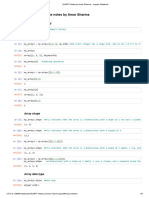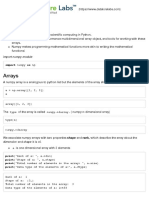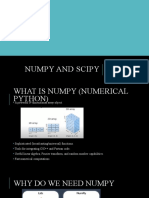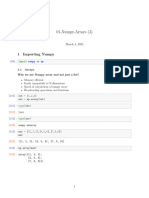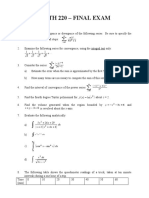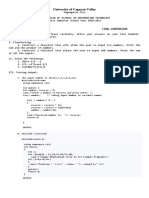0% found this document useful (0 votes)
98 views10 pagesNumPy Basics for Python Learners
The document provides an introduction to NumPy arrays. It discusses how to create arrays from lists and matrices, and built-in NumPy functions like arange(), zeros(), ones(), and eye() to generate numeric arrays. Examples are given for each function to demonstrate how they can be used to create arrays of different shapes and values.
Uploaded by
KamalCopyright
© © All Rights Reserved
We take content rights seriously. If you suspect this is your content, claim it here.
Available Formats
Download as PDF, TXT or read online on Scribd
0% found this document useful (0 votes)
98 views10 pagesNumPy Basics for Python Learners
The document provides an introduction to NumPy arrays. It discusses how to create arrays from lists and matrices, and built-in NumPy functions like arange(), zeros(), ones(), and eye() to generate numeric arrays. Examples are given for each function to demonstrate how they can be used to create arrays of different shapes and values.
Uploaded by
KamalCopyright
© © All Rights Reserved
We take content rights seriously. If you suspect this is your content, claim it here.
Available Formats
Download as PDF, TXT or read online on Scribd
/ 10





